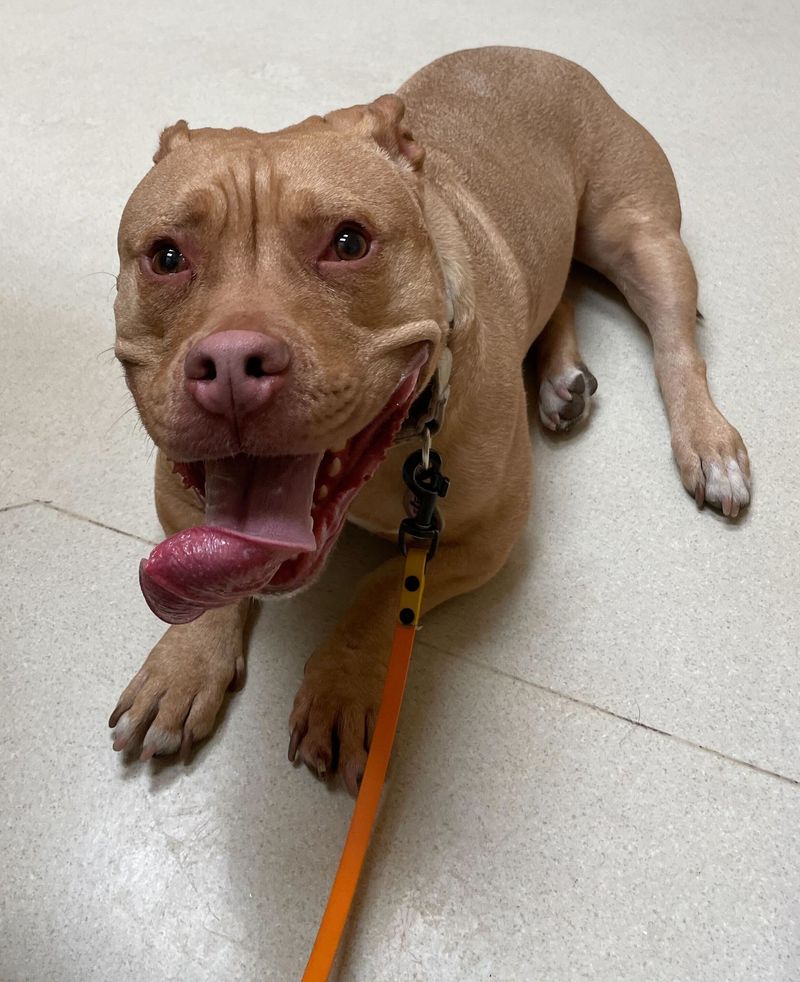Dogs, much like humans, experience stress in various situations. Sometimes, these signs are so subtle that they go unnoticed by even the most attentive pet owners. Understanding these subtle indicators can help you manage your dog’s stress effectively, ensuring a healthier and happier life for your furry friend. Here are 13 subtle signs that your dog might be more stressed than you think.
Yawning and Lip Licking
When your dog yawns excessively, it might not be due to boredom or fatigue. Yawning can be a subtle sign of stress. Similarly, if your dog licks its lips frequently without the presence of food, it could indicate nervousness. These behaviors might seem harmless, but they often reflect an underlying unease. It’s essential to observe when and where these actions occur. Are they happening during certain situations or around specific people? By identifying patterns, you can address the root cause and help alleviate your dog’s anxiety.
Shaking and Trembling
Shaking and trembling are not just signs of cold or fear. If your dog exhibits these behaviors in non-threatening environments, stress might be the culprit. Observe when this occurs—whether it’s during visits to the vet or while meeting new people. These shakes can be subtle, so paying close attention is key. Helping your pet by providing comfort and security during unsettling times can reduce these stress-triggered shakes, ensuring your dog remains calm.
Excessive Shedding
Excessive shedding isn’t always about the changing seasons. Stress can cause your dog to shed more than usual. If you notice an increase in hair loss, consider any recent changes in their environment. Have you moved recently or introduced new pets? Understanding the causes can help you address the stressors. Regular grooming and maintaining a stable environment can minimize shedding related to stress.
Panting When Not Hot
Panting is a natural way for dogs to cool down, but if your dog is panting excessively when there’s no apparent reason, it might indicate stress. Pay attention to their environment and any potential triggers. Is there a loud noise or unfamiliar person nearby? Identifying these can help you create a more comforting space. Ensuring your dog has a quiet, safe place can significantly reduce stress-induced panting.
Avoidance Behavior
Avoidance behavior, such as turning away or hiding, can indicate that your dog is experiencing stress. This subtle sign is often overlooked because it seems like your dog is simply uninterested. However, it’s crucial to recognize these signs and understand what might be causing the discomfort. Is it a particular person or situation? By identifying these triggers, you can help your dog feel more secure and reduce their stress levels.
Pacing Back and Forth
Pacing is a clear sign of stress, yet it can be subtle and easy to miss. If your dog is walking back and forth repeatedly, take note of their surroundings. Are there loud noises, unfamiliar guests, or changes in routine? These factors might be causing anxiety. Providing a calming environment and establishing a routine can help reduce pacing and alleviate stress.
Excessive Barking
While barking is normal, excessive barking can signal stress. If your dog is barking more than usual, consider what might be causing distress. Is there a new neighbor or construction nearby? Identifying these stressors can help you manage your dog’s reaction. Training and creating a calm environment are effective ways to reduce stress-induced barking, ensuring a peaceful atmosphere for both you and your pet.
Changes in Appetite
A sudden change in appetite, whether increased or decreased, can be a subtle sign of stress. If your dog is eating more or less than usual, reflect on recent changes in their environment or routine. New family members, different feeding times, or altered activities might be impacting your dog’s eating habits. Addressing these factors and establishing a consistent routine can help normalize their appetite and reduce stress.
Whining or Whimpering
Whining or whimpering is often associated with distress or discomfort. If your dog is vocalizing more frequently, it might be expressing stress. Pay attention to when this behavior occurs—does it happen when you leave the house or during thunderstorms? Understanding these triggers can help you provide comfort and reassurance. Offering distractions like toys or background noise can alleviate stress-induced whining.
Destructive Behavior
Destructive behavior, such as chewing furniture or shoes, can indicate stress. If your dog is engaging in these activities, consider what might be causing anxiety. Is your dog left alone for long periods, or have there been changes in their routine? Addressing these issues by providing more engagement and activities can help redirect their energy positively, reducing stress-induced destruction.
Sleeping More Than Usual
If your dog is sleeping more than usual, it could be a sign of underlying stress. While rest is essential, excessive sleep might indicate that your dog is trying to cope with anxiety. Monitor their sleep patterns and look for other stress indicators. Creating a comfortable and secure sleeping environment can help your dog manage stress better, ensuring they wake up refreshed.
Compulsive Licking
Compulsive licking, especially if directed towards paws or other body parts, can be a sign of stress. This behavior is often a way for dogs to soothe themselves. However, if left unchecked, it can lead to skin irritation. Observing when this happens can help you identify stressors. Providing toys or engaging in play can help distract and reduce compulsive licking, promoting healthier behaviors.
Ears Pinned Back
Ears pinned back is a subtle but significant sign of stress. This posture often indicates that your dog feels threatened or uncomfortable. If you notice this behavior, assess the situation. Is there an unfamiliar person or loud noise present? Understanding these triggers can help you provide comfort and reduce your dog’s anxiety. Offering reassurance can ease their stress, promoting a sense of security.













